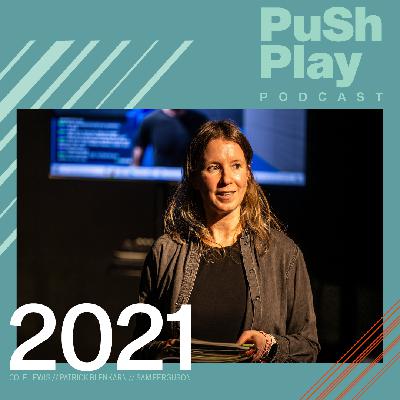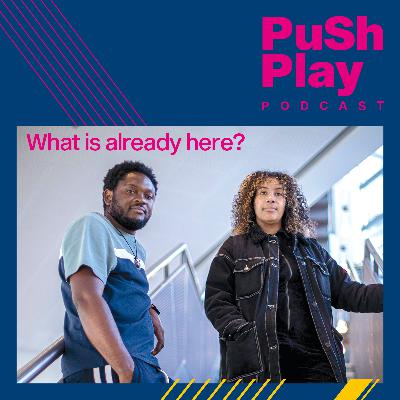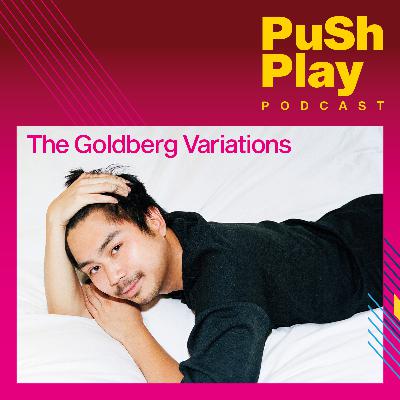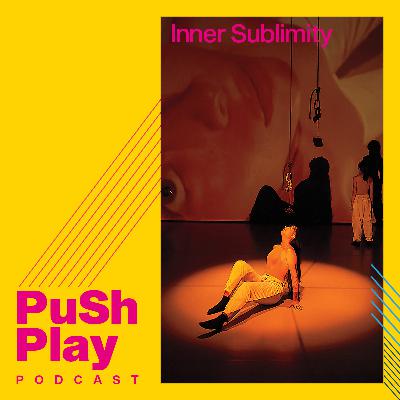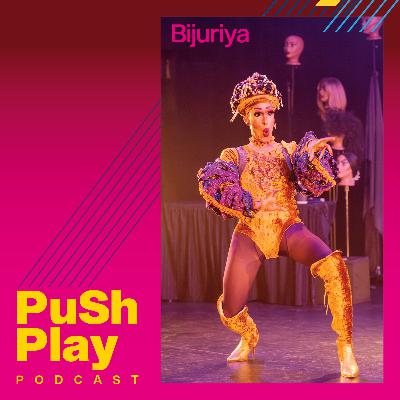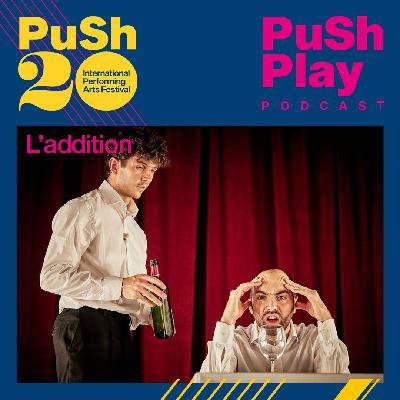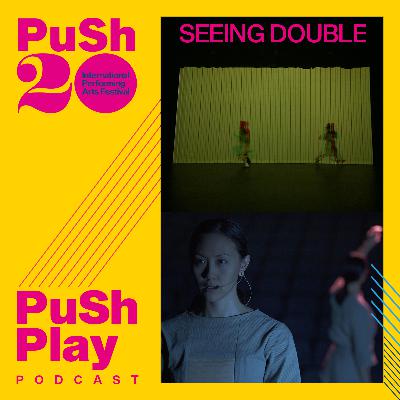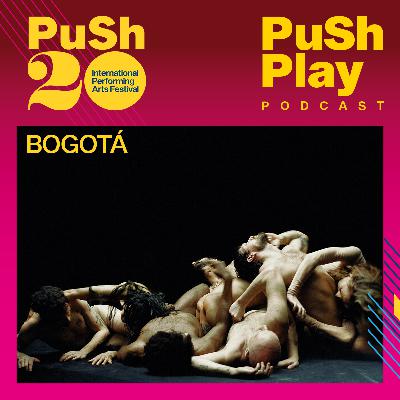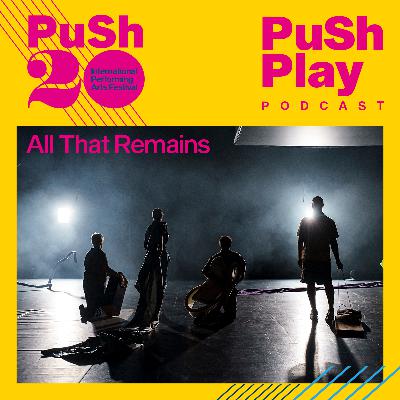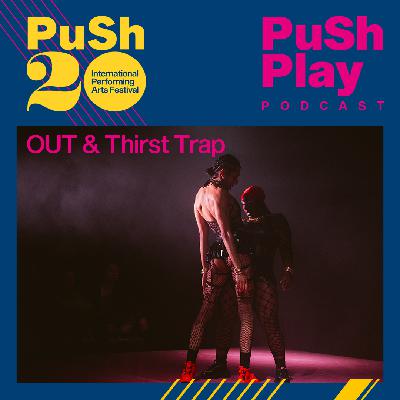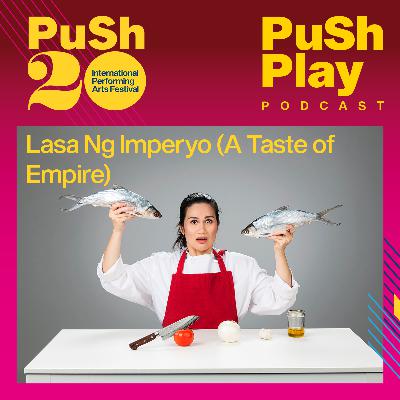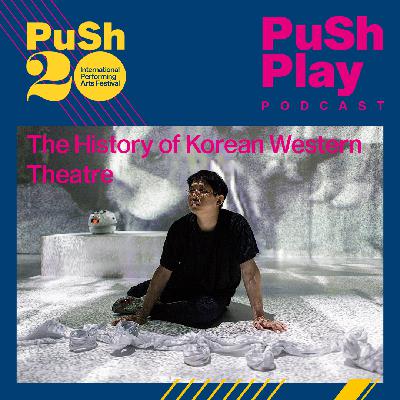Ep. 56 - The Art of Contortion (Nadère arts vivants)
Description
Gabrielle Martin chats with Andréane Leclerc of Nadére arts vivants for the Season 3 Finale of PuSh Play! Throughout the Festival, Andréane will be sharing her practice through a variety of workshops and consultations for students and professionals as part of a PuSh Festival Artist Residency.
Show Notes
Gabrielle and Andréane discuss:
-
How do you integrate difficult contortion movements with somatic practices? What is the relationship between your practices 20 years ago and those you have today?
-
How do you write circus?
-
What does it mean to deconstruct and body and language of contortion?
-
What is dramaturgy in this context?
-
How are you working in the community?
-
How does contortion inform non-contortionist bodies?
-
What does relational ecology look like in the rehearsal process and onstage?
-
What are you currently researching?
About Andréane Leclerc
A conceptual and performance artist, Andréane Leclerc is interested in human encounters that guide her towards interdisciplinary and interartistic processes. Trained as a contortionist (National Circus School of Montreal, 2001), she draws inspiration from her 20 years of circus practice to reflect on contortion as a philosophical posture and to develop her scenic language. Her approach, focused on listening, relational ecology and perceptive attention, is part of new body practices emerging from the somatic and performance fields.
In 2013, she completed a master's degree on the dramaturgy of prowess at the UQAM theater department. That same year, with her partner Geoffroy Faribault, she founded the company Nadère arts vivants in order to pursue her exploration of a body/matter evolving in sensation rather than in sensationalism. She created the conceptual pieces Di(x)parue 2009; Bath House 2013; Mange-Moi 2013; Cherepaka 2014; The Whore of Babylon Featuring The Tiger Lillies 2015; Sang Bleu 2018; À l'Est de Nod 2022 and (X) currently in creation. Her pieces have been presented in Tokyo, Florence, Cairo, Tenerife, Sao Paolo, Guadalajara, Chicago, Rouyn-Noranda and Montreal, on contemporary stages, as well as in museums and galleries.
In parallel to her artistic career, Andréane Leclerc is a teacher and offers contortion classes to physical artists since 2015. She also develops interdisciplinary dramaturgy workshops for circus, dance, theater and performance artists (Studio 303, En Piste, Playwrights workshop Montreal in Montreal, La Gata Cirko in Bogota, La Grainerie in Toulouse, Fabbrica Europa in Florence). In 2017, she participated in the creation of Cirque OFF, a living manifesto for the biodiversity of circus arts in Montreal (Studio 303). She also occasionally act as a dramaturgy and movement consultant (Dialogue of Disobedience & Black light, white noise by and with Dana Dugan, 2018 & 2022) and performs for various international projects (Variations pour une déchéance annoncée by Angela Konrad, 2012; The Tiger Lillies Perform Hamlet since 2016).
Land Acknowledgement
This conversation was recorded on the unceded, stolen and ancestral territories of the Coast Salish Peoples: the xʷməθkʷəy̓əm (Musqueam), Skwxwú7mesh (Squamish) and Səl̓ílwətaɬ (Tsleil-Waututh), colonially known as Vancouver.
Majula joined the conversation from what is now known as Montreal, on the traditional territory of the Kanien'kehà:ka, a place which has long served as a site of meeting and exchange amongst many First Nations including the Kanien'kehá:ka of the Haudenosaunee Confederacy, Huron/Wendat, Abenaki, and Anishinaabeg.
It is our duty to establish right relations with the people on whose territories we live and work, and with the land itself.
Credits
PuSh Play is produced by Ben Charland and Tricia Knowles. Original music by Joseph Hirabayashi.
Show Transcript
Hello, and welcome to Push Play, a Push Festival podcast featuring conversations with artists who are pushing boundaries and playing with form. I'm Gabrielle Martin, Push's Artistic Director, and today's episode highlights the dramaturgy of the circus body and relational ecology. I'm speaking with Andréa Leclerc of Nadir Arvivant, a performer, director, researcher and pedagogue. Andréa Leclerc has developed a somatic practice inspired by contortion for over 25 years. She creates transdisciplinary scenic works based on cooperation, listening and relational ecology. She's also a 2025 Push Artist in Residence, and will be sharing her practice through a variety of workshops and consultations for students and professionals throughout the festival.Find out more at our Push in the Community page. Here is my conversation with Andréa. I am thrilled to be in this conversation with you today. We're going to be talking about your practice and what you'll be up to at Push and what brings you here, what's brought you to this point in your career and what you're thinking about next. And just as we are about to get into that, I really just want to take a moment and acknowledge the land I'm on today. And, you know, this morning I was reading an article about PFAS or forever chemicals in our water, and I know we're all really aware of the signs of our extractive dynamic with the earth. And these signs are all around us and they seem to be pressing in daily. And I just I'm really incredibly grateful to live in this rich nature of so-called Vancouver, these unceded ancestral territories of the Musqueam Squamish and Tsleil-Waututh Coast Salish peoples. And to reflect on what it means to be a citizen of these lands and to live in reciprocity, which, you know, a totally different posturing than this extractive dynamic that's got us here today.And again, where are you where are you calling from? And I would love you just to I would love to hear you share your relationship to the land you're on. Yes, thank you, Gabrielle. I would like to acknowledge that the dramaturgy called Spirit, which runs through another of the event creation, has been shaped by contact with various unceded indigenous territories where beings and their memories coexist. So I'm joining this conversation from Jojagi Mounia in Montreal, which has long been a meeting place for diplomatic activities between indigenous nations. You started practicing contortion over 25 years ago, and this has evolved into your own unique somatic practice and pedagogy. And many many people would not associate contortion with its references to circus, virtuosity, the extreme, you know, painful looking positions with somatic practice, which tends to refer to more internal mind body methodologies. I would love it if you can describe how you made the connection between contortion, the contortion you were practicing, you know, when you started 25 years ago and the contortion you practiced today.
Yes, that's a very good question, because it's actually at the core of my problematic that has been leading my research from all that disconnection between what I perceived and live and embody my contortion body and all the perceived from and the perception from the audience that they were projecting upon my body when I was doing more classical circus forms. So since I was very young, contortion always have been for me a place for breath and accessing imaginary landscape and other sphere that were for me very fertile in terms of creation. And I always wanted and so new narratives and so on. So I was really traveling throughout my body and it was a way to resonate with the world and a way to be and live, experience the world. And so that always have been something I wanted to share with the audience.But then I'm starting from a very classical approach of contortion. So I was I did my education at the National Circus School in Montreal and I graduated in 2001. So a few years ago now, I've been really, fun, highly skilled, like contortion practice. So sitting on the head on handstand with very precise code and codification from spectacular, I would say, marketing law, when I'm understanding that. And so by, but that was just a way to do. And so by traveling the world working as a contortionist, at some point, even though, like, I was also formed as a contemporary circus artist, I always felt so unsatisfied by the impossibility to reach the audience with what I wanted to express.So then I was like, okay, so then how can I do that? And at some point, I did one creation in Germany. And we it was the first time I was doing like, proper, I would say, research on quantum physics. And it was a show inspired by quantum physics. And we had talks with researchers and scientific and scientists. And there was like an opening on new possibilities. And so there was very clear dramaturgical choices that has been made in matter to be linked with the subject. And so for me, there was a before and an after, because with that creation, there was a possibility to question the codification of how to write circus.And so art did not add to happen in between the circus technique. But the technique and the body and the circus body could talk itself out. Then there was some limitation of my research by was I opening door to actually come back to the university in theaters studying dramaturgy of the body, where I really passed few years to deconstruct the language of spectacular deconstruct the language of c


